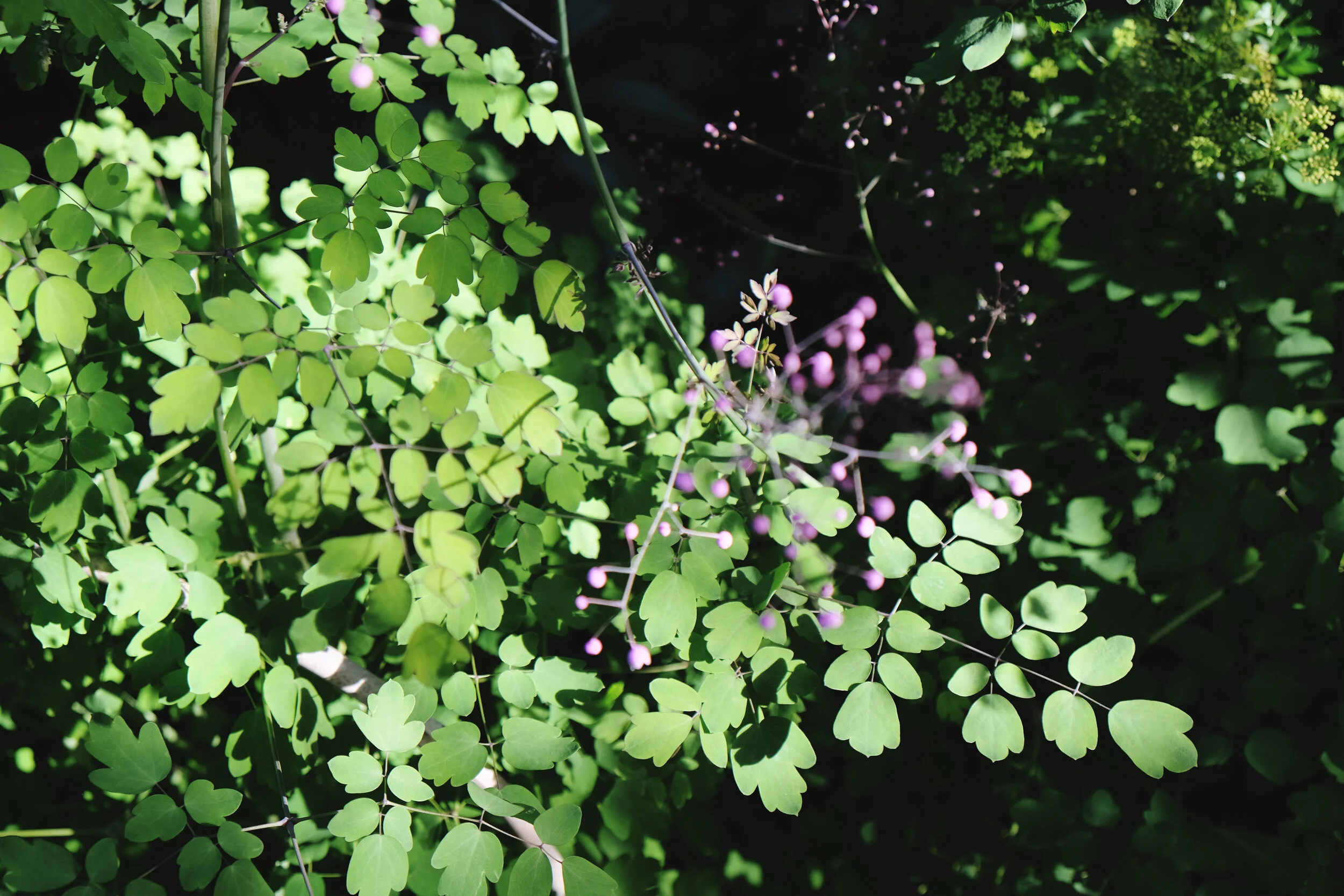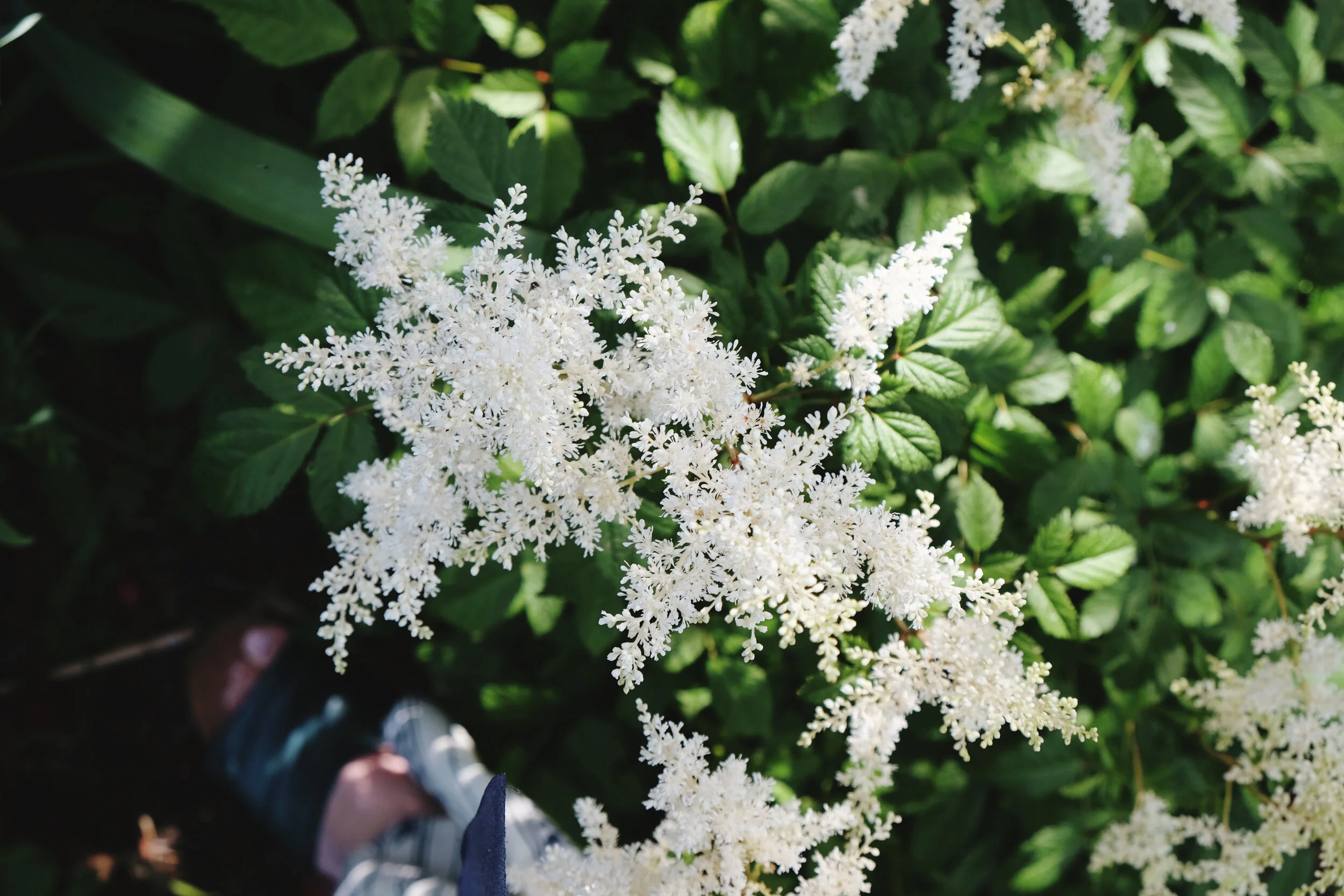Flowering plants for shady corners
/As a beginner, I took the brutal course of trial-by-error when experimenting with flowering plants in my partly-shady beds.
Determined to replicate the rambling vibe of the abundant, flower gardens I had been collecting on Instagram, I ploughed forth on planting a library of sun-loving plants in the dimly lit corners of my plot. It took me many a mistake to connect the dots that my fence and tree-shaded beds wouldn’t be a friendly environment for most of the fun plants I wanted to grow.
Even when it looked like I might get a success, they were slim wins, with my larkspur growing horizontal to the ground hunting for light, my peonies leafing up, but never flowering (not once over 3 years) and my phlomis sulking like a teenager barred from its phone.
So back to the books (and internet) I went, religiously reading the growing conditions for every plant that caught my eye. The result this summer hints at a glimmer of success and possibly a full, flowering bed for the future, despite the lack of sun. This is thanks to a handful of winners that coped with my testing and have thankfully proven to look terrific mixed in together.
Thalictrum delavayi “Hewitt’s Double” with its misty lilac clouds in the corner accompanied by pink and white varieties of astilbe, and bright sunny echinacea. That giant self seeded angelica was allowed to stay until if got snapped by the wind.
Thalictrum Delavayi
An extraordinary summer flowering perennial that brings as much pleasure from its blooms as it does with its fern-like foliage. I had such luck with my first Thalictrum delavayi “Hewitt’s Double” that I shot down to pick up more from each perennial sale at my local garden centre. Last autumn, I then divided my three plants to create six and, this year, was rewarded by a towering display lighting up my semi-shaded bed.
“Hewitt’s Double” grows extremely tall – to around 2m – with at least half of that made up by misty sprays of tiny, lilac flowers arriving in summer. It is terrific for picking and often mistaken as gypsophila. In contrast, I have also collected its close cousin; Thalictrum delavayi “Chinese Meadow Rue” growing to 1.5 metres with its exquisite bell-shaped flowers. With a similar flower shape, Thalictrum delavayi “Alba” brings creamy white blooms and a more compact size again. All are terrific options in a semi-shaded garden, bringing splendour with their unique blooms and foliage that you can be picking from spring.
Thalictrum delavayi "Chinese Meadow Rue"
Attractive thalictrum foliage
Astilbe
Astilbes were the first shade-tolerant plant I found with a flower that I loved. Like their perennial friends listed here, astilbes are winter dormant, retreating right back to their roots before emerging again in spring. They also divide extremely well – I was able to create eight new plants from my original three last autumn.
Astilbes have a surprisingly wide spread of foliage from their clump that remains until the first frosts, keeping your garden looking full. Topped with fluffy spires in summer, available in an array of colours and even shapes, the advantage of these blooms is that they fade to retain their attractive form. This means I leave the spent flowers on the plant for structural interest until late autumn, or early winter, when I notice the whole plant starting to melt away for the year.
I currently have an assorted collection of astilbes that I have long since lost their labels, but, this year, I added to the crew a taller, showy variety called Astilbe taquetii “Lilac”.
Astilbe
Astrantia
I still remember the day I spotted the intricate, delicate blooms of astrantia in an arrangement and immediately went investigating to find out more. A headline when hunting online described it as “the most beautiful perennial you have never heard of” – something I couldn’t agree with more!
With very similar leaves to astilbes, astrantia offers lovely, clump forming foliage shooting up stems with multiple flower heads. And they are truly magical, lasting an eternity on the plant, as well as in a vase.
Arriving in summer, astrantia is generally the last plant flowering in my garden before true winter arrives. My favourites at the moment are Astrantia major “Rubra” – with its deep plump accents – and Astrantia major “Star Bush”, with its green-tipped petals. I am sure my collection will grow.
Astrantia
Echinacea
I have pushed the shade envelope with nearly every plant in my garden, but echinacea has been the true surprise, thriving in the patchy sun allowed by my mature trees and fence line. It mixes well with my other favourites above, bringing its graphic, cartoony flowers as a foil to the delicate forms of its neighbours. I am well down the road of “echinacea collector status”, with more than seven different varieties woven through my urban garden in the familiar mauve pinks, whites and an array of petal forms.
While I am certain that some are more fussy than others, it is classic Echinacea purpurea that has reigned supreme in my lower lit areas and well worth a go for anyone looking to bring some character to the shade.
Echinacea with thalictrum in the background
This article was first featured in my Stuff ‘Homed’ gardening column for beginners and The Press on January 28 2021
All words and images are my own, shot in my garden in Christchurch, New Zealand.








